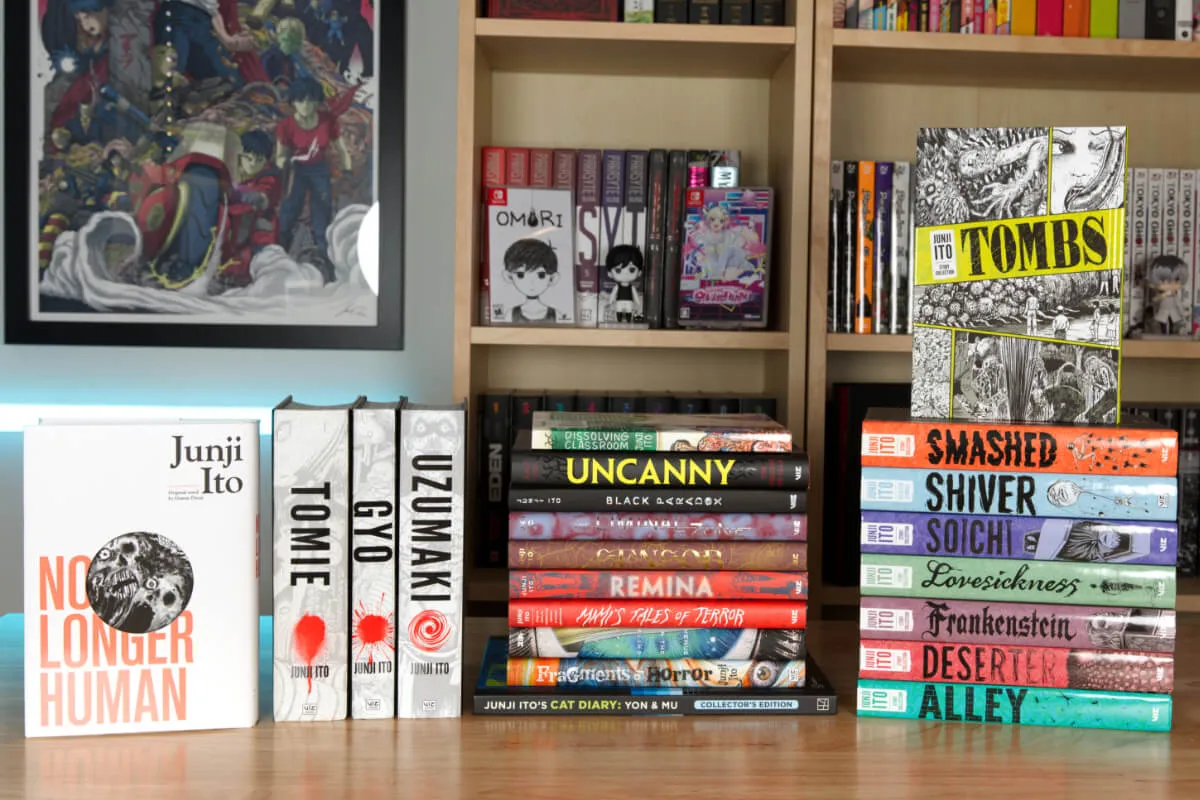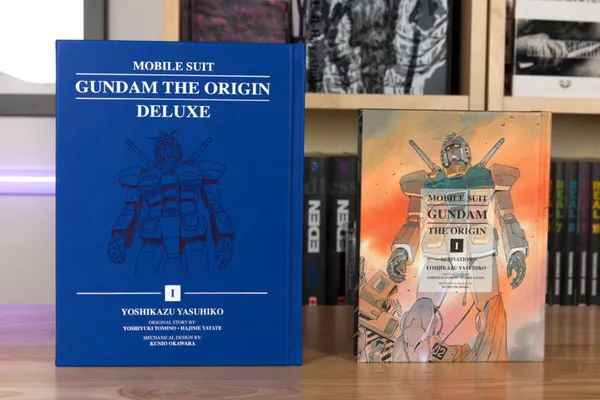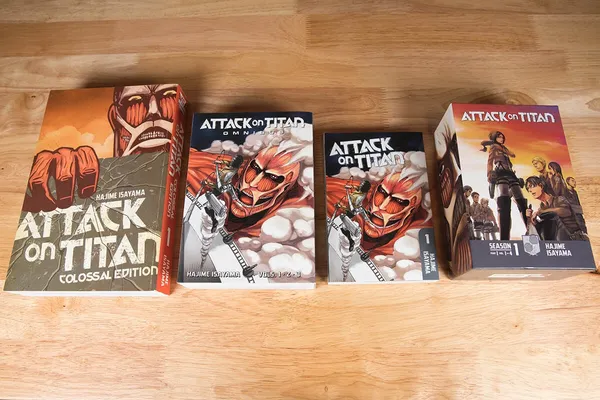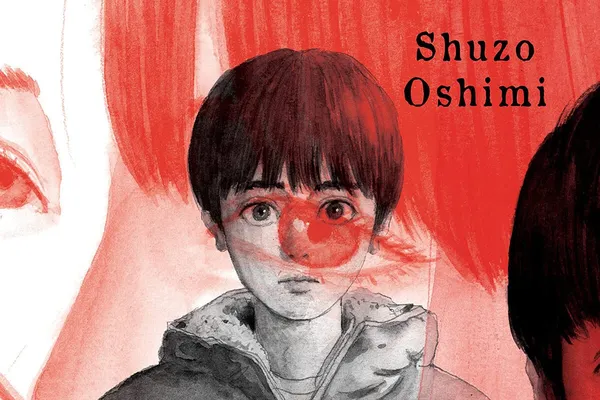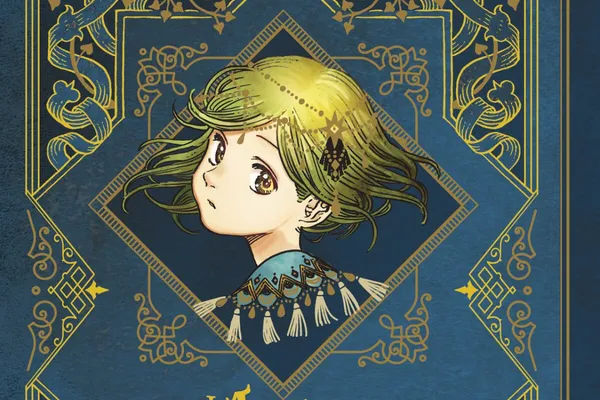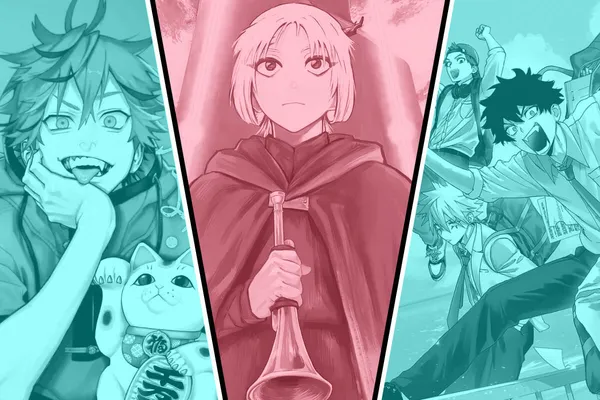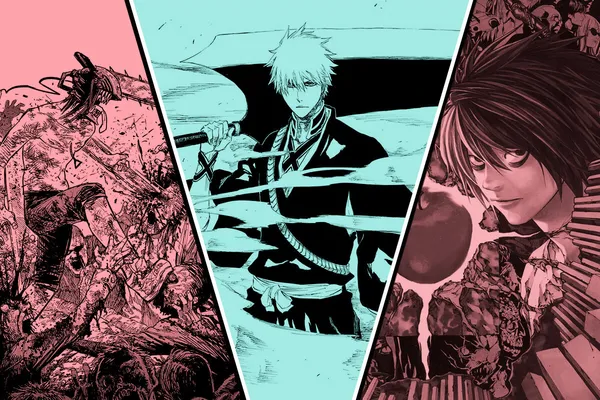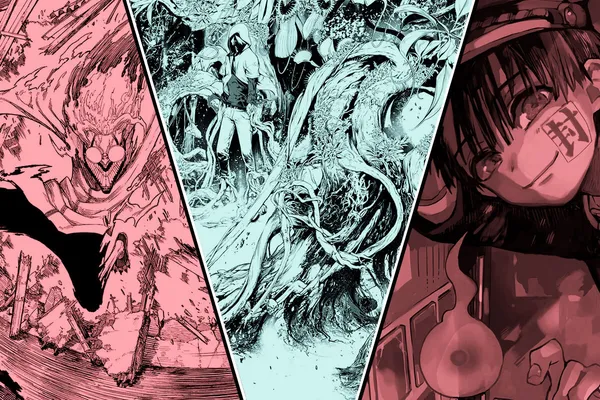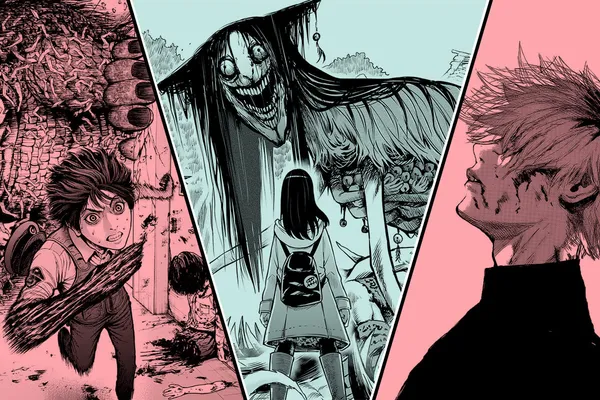Junji Ito has carved out a space in horror like few others ever have. Inspired by masters like Kazuo Umezu yet wholly original, he’s given us a library of unforgettable works—from unsettling short stories to sprawling cosmic nightmares. His highly detailed, twistedly beautiful panels, campy sense of humor, and child-like wonder for the bizarre all come together to create horror that’s instantly recognizable and strangely believable.
Watching interviews with him only deepens the appeal: he’s down-to-earth, endlessly curious, and genuinely loves crafting his eerie worlds. While often labeled simply a “horror master,” there’s much more to what makes Ito stand out—if you want to learn more about how he earned that title, check out our full Junji Ito guide here.
In this post, we rank all of Junji Ito’s manga released in English—from his short story collections to his full-length series and adaptations. Why trust us? We’ve read every single one of these titles—twice over, to keep our impressions fresh and fair—and own them all physically in our collection. Whether you’re new to Ito or just curious how your favorites stack up, here’s how his twisted series line up in our book.

21. Sensor
One of Junji Ito’s later cosmic horror works, Sensor follows Kyouko as she’s drawn to a mysterious village covered in shimmering volcanic glass, where strange customs and UFOs signal otherworldly horrors. While it explores fascinating themes like the vastness of the universe, psychic powers, and humanity’s place in it, the story loses focus at times, feeling disjointed—especially during a chapter involving bugs. Ito himself admitted the characters and plot expanded beyond his control, and it unfortunately shows. Overall, Remina is the stronger cosmic horror story, but Sensor still has some intriguing ideas and stunning artwork.

20. The Liminal Zone
One of Junji Ito’s latest collections, written during the pandemic and inspired by old ideas from his notebooks, with no page limits since it was made for an app. It features four new stories: “Weeping Woman Way,” about a girl who can’t stop crying; “Madonna,” a witchy, religious horror; “The Spirit Flow of Aokigahara,” a quirky tale of humans taking spirit baths; and “Slumber,” which explores the fear of what happens while asleep and turns waking life into a nightmare. “Weeping Woman Way” is the highlight and makes this worth checking out for fans, though there are other collections better suited for newcomers.

19. Dissolving Classroom
Dissolving Classroom mostly follows siblings Yuuma and Chizumi, who bring devilish horrors wherever they go. Yuuma’s obsession with the devil and Chizumi’s terrifying antics make up the first five stories, filled with some pretty gross and disturbing scenes. The last two stories, “The Return” and “Children of Earth,” are short but have some standout panels. It’s not one of Ito’s best, but fans already familiar with his work will find it worth a read, especially for how the sibling story wraps up. Not the best place to start, but solid for those who want more.

18. Frankenstein: Junji Ito Story Collection
This collection mainly adapts Mary Shelley’s Frankenstein, taking up 186 pages and staying fairly faithful except for one notable change involving the bride. While the stunning artwork brings the classic to life, the story doesn’t push boundaries as much as some might expect, especially in gore and horror, likely out of respect for the original. Other highlights include multiple stories about the mischievous Oshikiri, exploring parallel dimensions and their horrors, and “The Hell of the Doll Funeral,” a short but creepy tale about children affected by “dollification.” Overall, this collection is worth reading for Frankenstein fans, but since it dominates the volume, other collections are recommended before diving into this one.

17. Mimi’s Tales of Terror
Based on urban legends from Shin Mimibukuro, this collection follows Mimi through creepy situations with recurring characters and changing settings. The second half features stronger stories like “Seashore” and “Just the Two of Us,” while some earlier tales don’t land as well. Many stories have open endings, which might not be for everyone. It ranks lower here mostly because it isn’t as consistent throughout—but it’s worth checking out if you’re a big fan of Ito.

16. Deserter: Junji Ito Story Collection
One of Junji Ito’s more recent collections of his earliest works, Deserter is a fascinating look at his artistic growth from 1987 onward. Highlights include “The Long Hair in the Attic,” with its incredible imagery, and grisly body horror in “Where the Sandman Lives.” “A Father’s Love” tackles parental pressure and broken dreams, while “Scripted Love” spins a creepy breakup tale with unexpected consequences. Other strong stories include “Village of the Siren,” “Bullied,” and the twisty “Deserter,” about a man hidden away by a resentful family. While some stories feel less polished, his newer short stories demonstrate the skill and polish Ito has developed over the years, making this collection a glimpse into where it all began.

15. Remina
One of Junji Ito’s cosmic horror tales, Remina follows a girl whose scientist father discovers a distant planet headed toward Earth, sparking worldwide panic and paranoia. As Remina becomes an unwilling celebrity, the story explores humanity’s tendency to assign blame and victimize those in the spotlight during crises. The manga features stunning visuals, especially depictions of Remina as a martyr and the ominous planet itself. Remina feels like Annihilation and classic Lovecraftian horror, all with Ito’s unmistakable flair. Recommended for fans of cosmic horror, though Uzumaki remains the better starting point for newcomers.

14. Lovesickness: Junji Ito Story Collection
The collection opens with “Lovesickness,” a standout story about Ryusuke returning to a hometown obsessed with ominous “Crossroads fortunes,” where a mysterious boy’s arrival sparks tragic deaths — a dark take on society’s idol worship. Other highlights include the slapstick “The Strange Hikizuri Siblings,” the gruesomely beautiful art of “The Rib Woman,” and “Phantom Mansion,” which uniquely explores pain. The art is classic Junji Ito: gorgeously detailed and chilling. While Lovesickness has some strong moments, it doesn’t hit as consistently as Ito’s best collections. It’s worth reading for fans but isn’t the ideal starting point for newcomers.

13. Junji Ito’s Cat Diary: Yon & Mu
A heartwarming departure from Ito’s usual horror, Junji Ito’s Cat Diary: Yon & Mu captures the quirks and charm of living with cats through his unique lens. It offers a comedic, personal look into Ito’s life with his wife A-Ko and their cats, balancing moments of sleep-deprived imagination with genuine warmth. While it lacks the horror edge of his other works and ranks lower because of its very specific focus, it gives fans a fun and intimate glimpse into the man behind the nightmares. Available in a standard and glow-in-the-dark Collector’s Edition, it’s a great pick for anyone wanting to see a different side of Junji Ito.

12. Soichi: Junji Ito Story Collection
A collection of ten stories focused entirely on Junji Ito’s twisted prankster, Soichi, exploring his origins as a kid and teenager. From tormenting siblings and classmates to teaming up with a teacher who sees his own troubled past in Soichi, the stories mix dark humor with unsettling antics. One standout involves Soichi’s elaborate prank on his older brother, made possible by a soundproofed room, showcasing his twisted creativity. His family mostly brushes off his bizarre behavior, which ranges from shooting nails from his mouth to cursing those who slight him—spoiling him even as he teeters on dangerous extremes. Soichi’s mischievous nature makes for entertaining reading, but this collection is definitely for fans of the character; those who don’t enjoy Soichi’s chaotic pranks might want to skip it.

11. Black Paradox
Following four strangers—Maruso, Taburo, Pii-Tan, and Baracchi—who meet online with plans to vanish into a forest, Black Paradox starts as a story about personal despair and quickly spirals into something much bigger. Each character carries unique baggage: a looming sense of doom, boredom haunted by a doppelgänger, feelings of inferiority to a robotic copy, or shame tied to a birthmark. The group dynamic stands out, giving the story a quirky yet grounded edge as it dives into the afterlife, the human soul, and humanity’s relentless push to innovate, even when it leads somewhere dark. It’s one of Ito’s best for social commentary on greed, curiosity, and the need to understand what comes after. Short enough to finish in a sitting and full of striking themes, though it doesn’t reach the same scale or impact as Ito’s longer works. Still, it’s a solid pick for anyone who likes their horror paired with sci-fi.

10. Gyo
Gyo is about a couple trying to survive against these undead fish that somehow walk on land—and yeah, it’s as wild as it sounds. Ito said the idea came from his fear of sharks, which makes the whole thing creepier in a weird way. It’s less straight-up horror and more this crazy mix of weird, funny, and gross that somehow works perfectly. The smell of the death stench really gets under your skin (especially if you’re sensitive to smells), and the story throws some jaw-dropping moments your way. It’s definitely not his best—Uzumaki and Tomie still hold that crown—but if you want something fresh and totally out there, this is it.

9. Venus in the Blind Spot
This ten-story collection mixes two adaptations of Edogawa Ranpo’s works with some standout originals. “Billions Alone” is easily one of the best, twisting loneliness and the need for human connection into something horrifying, with bodies literally sewn together. “The Human Chair” captures paranoia perfectly and will make anyone think twice before sitting down, while “Venus in the Blind Spot” delivers a clever twist around a UFO group who suddenly can’t see the woman at the center of it all. “An Unearthly Love” hides something far worse than infidelity, and “The Enigma of Amigara Fault” remains a claustrophobic nightmare. “Keepsake” shows how consequences refuse to stay buried, and “Master Umezz and Me” offers a personal look at Ito’s early obsession with Kazuo Umezu’s horror classics. Other stories like “The Licking Woman” and “The Sad Tale of the Principal Post” have strong visuals but don’t stick as hard. Overall, a solid collection that sits just below Ito’s very best but still delivers plenty of unsettling moments.

8. No Longer Human
Junji Ito’s strongest adaptation to date, based on Osamu Dazai’s haunting novel, with Ito pushing the already heavy psychological dread even deeper into horror. This version stays mostly faithful to the original but adds new twists, chilling visuals of inner demons, and more explicit glimpses into Dazai’s struggles. It’s a perfect fit for Ito’s fascination with the fear of people, though far more serious and subtle than his usual brand of horror. Graphic and mature, this is a tough, unsettling read that stands out in his catalog for how literary and dark it feels. Still, with other adaptations like Furuya’s out there — and with the original novel’s own raw power—this lands a little lower than it might for most, but remains an impressive, deeply disturbing work in his catalog.

7. Alley: Junji Ito Story Collection
With tales that twist ordinary situations into vivid nightmares, Alley stands out for how it captures fear tied to personal fixations and everyday anxieties. “Alley” itself delivers one of the most disturbing final scenes in any of Ito’s works. “Blessing” turns the desperate pursuit of a father’s approval into surreal horror, and “Descent” digs into obsession and overwork with chilling results. “The Ward” leans into hospital unease with sharp monster designs, while “Mold” is downright stomach-turning. As with many of Ito’s collections, the impact often depends on how closely a story’s theme matches your own personal fears, making this a fascinating but slightly less consistent read overall. Still, the strongest stories here easily keep it near the top tier.

6. Tomie
Tomie is the ultimate femme fatale: an immortal succubus with long black hair and a beauty mark under her left eye who seduces men, drives them to madness, and always returns no matter how many gruesome ways she’s killed. Her regeneration is like a parasitic virus, even infecting other women until no trace of them remains. The stories explore humanity’s obsession with love and how easily it warps into something deadly, while also highlighting Tomie’s self-absorption and divine hunger for attention. Each chapter brings out a new side of her manipulation, whether it’s with a boyfriend, a father, or a child she deceives into seeing her as a mother. The Deluxe Edition collects everything, from Ito’s rough early chapters in 1987 up through later works where his art is at its most detailed and grotesque. Easily one of his most fascinating creations and a must-read among his full-length works.
Read our detailed Tomie review to learn more.

5. Fragments of Horror
Eight stories that show Ito still at the top of his game, despite his own doubts in the afterword. “Tomio: Red Turtleneck” stands out most, with incredible panels and the deeply unsettling idea of literally holding one’s head on. “Gentle Goodbye” offers a haunting twist on grief, while “Black Bird” hides something far more sinister behind a rescue story. “Dissection-chan” is gruesome and strangely beautiful, and “Whispering Woman” tackles overwork, abuse, and devotion in unique ways. A few tales like “Magami Nanakuse” and “Wooden Spirit” miss the mark, but overall this is one of Ito’s strongest collections.

4. Tombs: Junji Ito Story Collection
Another standout collection with nine stories that dig into both human nature and deeper primal fears. “Tombs” explores what it means to truly be at peace in death — and the dangers of disturbing that peace — while “Clubhouse” dives into group divides, choosing sides, and the chilling consequences of standing in the middle. “Slug Girl” leaves unforgettable imagery, twisting something as harmless as snails into pure nightmare fuel, and “Washed Ashore” captures the terrifying unknowns of the deep sea. “Floaters” plays on the horror of having one’s deepest secrets exposed in the most mortifying way, and “The Bloody Story of Shirosuna” ends the collection with a bizarre, well-executed tale about a town full of anemic residents hiding grisly truths. Some weaker entries like “The Window Next Door” and “Bronze Statue” don’t land quite as hard, but with stories like “Tombs,” “Clubhouse,” and “Slug Girl,” this ranks among Ito’s strongest short story outings — just a notch below Shiver and Smashed.

3. Smashed: Junji Ito Story Collection
On any given day, Smashed easily rivals Shiver as Junji Ito’s top collection. It’s filled with stories that are either twisted or wacky in the best possible way, striking a balance between serious horror and Ito’s darkly comedic side. “Earthbound” delivers one of the strongest twists in any of his shorts, while “Death Row Doorbell” explores forgiveness, grudges, and how families cope with trauma. The Soichi stories add a playful, sinister thread, with Soichi older and running a haunted house that travels from town to town, plus there’s an unforgettable panel buried in “Soichi’s Beloved Pet.” “In Mirror Valley” and “I Don’t Want to Be a Ghost” tap into unsettling, uncanny fears, while the last three—“Library Vision,” “Splendid Shadow Song,” and “Smashed”—dive into obsession, eerie melodies, and ominous rules that lead to grim ends. Even with a few lighter entries like “Ghosts of Prime Time” and “Roar,” the best stories here showcase exactly why Ito is one of manga’s best.

2. Shiver: Junji Ito Selected Stories
One of Ito’s strongest and most balanced collections, complete with everything that makes his work so compelling—from grotesque body horror and eerie monster designs to unsettling social commentary and psychological dread. “Hanging Blimp” is easily the standout, with haunting balloon doppelgängers that stalk people to their deaths. “Used Record” turns a simple song into violent obsession, and “Honored Ancestors” delivers incredible body horror with imagery around memory and lineage that’s hard to shake. “The Long Dream,” “Greased,” and “Marionette Mansion” all hit in distinct, deeply unnerving ways. Shiver is best paired with Smashed, and ideally read first to catch the clever story connections.
Read the full Shiver review for more.

1. Uzumaki
Junji Ito’s best full-length work and one of the greatest horror series ever made. It’s a masterclass in psychological horror, following a town consumed by spiral obsessions that twist reality and sanity alike. Creepy, detailed, and original, Uzumaki captures the descent into madness like nothing else—a truly unforgettable nightmare.
Junji Ito’s manga span a wide range of horror, from sci-fi to psychological dread to the bizarre. We’re big fans of his work, and having read every English release—twice—and owning them all, this ranking shows why he’s one of the best. For newcomers, Shiver is a great starting point for short story collections, while Uzumaki and Tomie are great picks for full-length works. If you’re already a fan, though, there’s plenty here to explore.
If you want to dive deeper into horror manga, check out our full guide for more recommendations.
